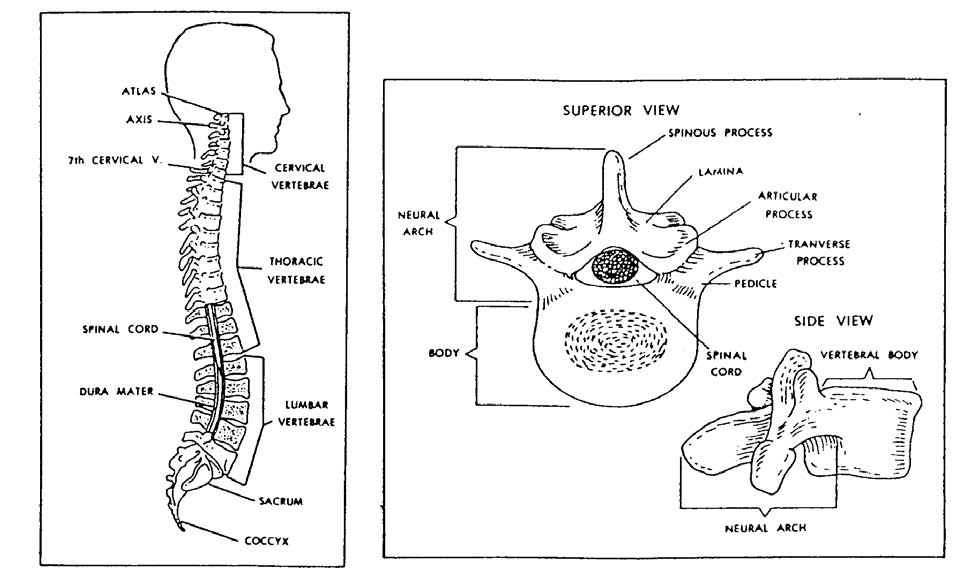Treating Fractures in the Field
Lesson 2: Spinal
Injuries
Section I: General
2-1
Section I. GENERAL
2-1. ANATOMY
a. Spinal Column. The spinal column (also called the backbone, spine, or vertebrae column) consists of a series of bones called vertebrae (see figure 2-1) and fibrocartilage layers (intervertebral disks) that separate adjacent vertebrae. The vertebrae are held together by ligaments. The top seven vertebrae (cervical vertebrae) are the bones of the neck. The next twelve vertebrae (thoracic vertebrae) form the upper part of the back and have the ribs attached. The next five vertebrae (lumbar vertebrae) form the lower part of the back. The next five vertebrae (sacral vertebrae) are located between the hip bones. They are fused together and form the sacrum, a structure that looks like a broad triangle. The final four vertebrae (coccygeal vertebrae) are fused rudimentary vertebrae located at the end of the sacrum. These rudimentary vertebrae form the coccyx.
b. Spinal Canal. The spinal canal is created by holes in the posterior parts of the vertebrae. The spinal canal contains the spinal cord.
Figure 2-1. The spinal column and a typical thoracic vertebra.
c. Intervertebral Disks. The vertebrae that are not fused together are separated by intervertebral disks. These disks act as a cushion between the vertebrae.
d. Spinal Cord. The spinal cord is composed of nerves that carry impulses between the brain and the rest of the body. The spinal cord is protected by the spinal column. The spinal cord begins at the base of the brain and extends through the cervical vertebrae and thoracic vertebrae. The cord itself usually stops between the
second and third lumbar vertebrae. If the spinal cord is severed (cut completely), the muscles controlled by the portion of the spinal cord below the cut will not function. Muscle control may be lost even if the spinal cord is not severed. Pressure on the spinal cord from a fractured vertebra or pressure due to swelling of the spinal cord can also produce paralysis.
e. Cerebrospinal Fluid. The cerebrospinal fluid (CSF) is produced in the brain and acts as a protective cushion by surrounding the brain and spinal cord. Leaking cerebrospinal fluid (usually from the ears, nose, or site of a head injury) indicates a serious head or spinal injury.


